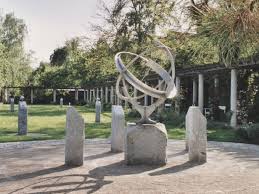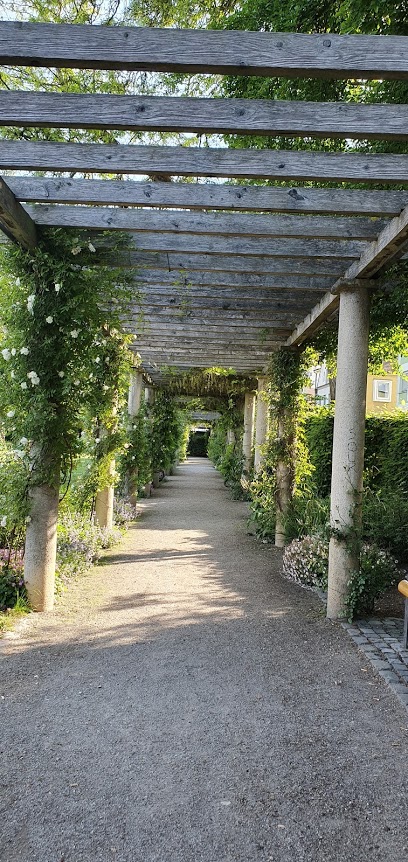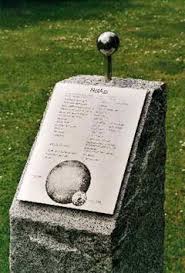To show the visitor the place of our land in addition to the size of the solar system, this astronomical park was created in the spring of 1998 by the Ingolstadt Observatory Society - AAI e.V. And the city of Ingolstadt.
The center of this astronomical park is a tropical sundial, achieving a dual function. As soon as the size of our sun represents 1: 109 meters (= 1.39 meters), on the other hand, it is an astronomical clock. On it, you can read the real local time of Ingolstadt, seasonal changes and back times important cities of the Earth.
Ingolstadt Astronomical Park
Tropical tropical solar clock as a sun with four inner granite pillars depicting planets Mercury, Venus, Earth and Mars.
All granite stones (planets) are in range, mid-distance to (the sun) at a ratio of 1: 1011 meters. Granite panels have panels that describe the physical properties of the planets.
Behind them, planets from outer planets Jupiter, Saturn, Uranus, Neptune and Pluto. At the exit there are two small patterns that signify comets.
The idea, planning and implementation of the Astronomical Park was based on five objectives:
To represent the size and shape of our solar system, to show the dimensions of our solar system and to understand the interconnections of our solar system. Furthermore, we would like to use this astronomical park to show the place of our land in the solar system and to remember the great astronomical achievements of Ingolstadt scientists who taught and researched from 1472 to 1800 in Ingolstadt.
General idea, design and planning: Dieter Lestritz, Ingolstadt Observatory - AAI.




